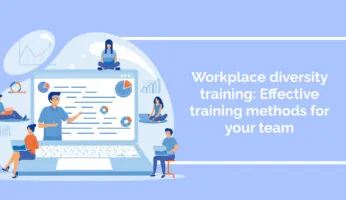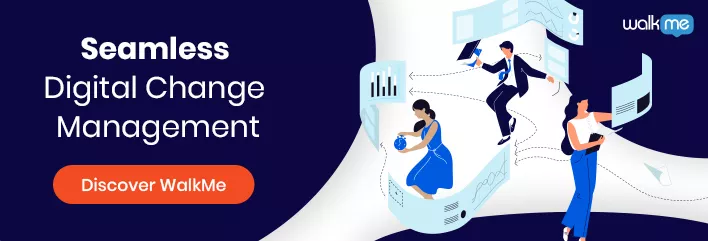
COVID-19 has accelerated change in many industries, and it will continue to reshape the global economy for some time to come – to stay profitable and competitive, companies should prepare for change now.
Of course, given the uncertainty and volatility in today’s economy, it can be difficult to predict exactly what the future holds.
This reasoning can cause many business leaders to hesitate and avoid organizational change altogether.
Yet the opposite should hold true: the uncertainty in today’s market should compel companies to reimagine their businesses for the post-COVID era.
COVID-19: The Great Accelerator of Change
COVID-19 has been called the “great accelerator” since it has fueled change in many industries.
To stay operational during the pandemic, for instance, enterprises around the world implemented remote working policies, adopted cloud computing, and more.
Emerging technologies, such as robotics, also saw growth, and many of these technologies will receive continued investment in the years ahead.
As a result, industry-leading research firms such as McKinsey and Accenture predict that COVID-19 will fundamentally alter the business landscape.
Change, they argue, is not just advantageous, it is a matter of survival.
How Businesses Can Prepare for Change and the Post-COVID Era
Below are a few recommendations that can help businesses prepare for change and stay profitable in the post-COVID era – or, as McKinsey calls it, “the next normal.”
Here are a few actions that companies can take today:
Learn what changes lie ahead
To adequately prepare for the post-COVID world, it is necessary to understand what changes lie in store.
Among other things, researchers predict that:
- Customer behavior and sentiment will shift considerably, and many people will prefer virtual services and experiences
- The demand for health-related products and services will increase significantly
- Remote working will become far more common
- Public health measures will permanently change workplace dynamics
Every industry will be impacted differently, but many changes will ripple across every sector.
For instance, the demand for virtual services will drive the implementation of countless new e-services, such as e-health, e-gov, and more.
The #healthcare industry is facing unprecedented disruption, here’s how @athenahealth stayed ahead. #Healthtech https://t.co/mRU054q2I2 pic.twitter.com/EoZWu3KLvm
— WalkMe (@WalkMeInc) August 5, 2017
Understanding how these trends will impact one’s own industry will become crucial as we move into the next normal.
Reimagine the workplace for a digital-first future
Digital transformation has been altering the global economy for decades, but, along with the other trends covered here, COVID-19 has vastly accelerated that transformation.
And when the entire global economy is operating on a foundation of digital technology, companies that don’t adopt a digital-first business strategy will be left behind.
When redesigning the workplace for a digital-first future, there are several points to keep in mind:
- Digital adoption, or the use of technology to its fullest extent, is a core pillar of digital transformation
- To realize the full value of products and services, employees must not only have the right skills, they must have a mindset that is pro-learning and pro-technology
- Digital innovation may well become a survival trait as we move into an economically uncertain business landscape
In short, the economy is undergoing a technological revolution, which many have called a new industrial revolution.
Those that recognize this will stand a much better chance of surviving and thriving in the years ahead.
Prepare for a more diverse workforce
The workplace will not be the only aspect of business undergoing major change – the workforce will also shift considerably.
Deloitte, for instance, points out that the workforce of the future will be more culturally diverse and more diverse in terms of age groups. That diversity, in turn, will necessitate new approaches to management, corporate culture, and more.
Yet another component of this diversity will be what Deloitte calls the alternative workforce, which will consist of four groups:
- Traditional workers, or those who work on-site and are considered full-time staff members
- Full-time remote workers who are staff, but who work off-site most or all of the time
- Outside contractors who may visit the worksite part-time or full-time during their contract periods
- Transactional remote workers who only interact with the organization remotely and as-needed
This new workforce composition certainly has its advantages in terms of flexibility, since remote working has shown to benefit both employees and employers.
At the same time, however, it is important to acknowledge the challenges associated with maintaining a cohesive corporate culture, remote training, collaboration, and so forth.
The earlier companies adapt to and prepare for these changes, the easier it will be to overcome these challenges.
Invest in innovation and disruption
For years, digital innovation has driven disruption and change in the global economy. And, if we are indeed in the midst of a technological revolution, innovation will continue to disrupt the economy for years, if not decades.
The implications of this should be clear – to stay competitive, innovation is a must.
Naturally, not every business can become the next Netflix or Amazon, but digital adoption and innovation does present many opportunities for growth.
Here are just a few reasons why innovation should become a strategic priority:
- Customer expectations evolve along with technology, and customers prefer companies who offer products and experiences that are innovative and modern
- Organizations that are early adopters of technology gain an advantage in their industry and can use that leverage to capture more market share
- When entire industries are driven by innovation, those who don’t innovate and transform are left behind
Ultimately, any company that wants to grow in the COVID-accelerated economy should invest heavily in innovation and agility, since expansion will often depend on those two traits.
WalkMe Team
WalkMe spearheaded the Digital Adoption Platform (DAP) for associations to use the maximum capacity of their advanced resources. Utilizing man-made consciousness, AI, and context-oriented direction, WalkMe adds a powerful UI layer to raise the computerized proficiency, everything being equal.



